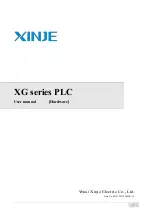
IPC = 1
LCD_PCLK
LCD_D[x:0]
LCD_HSYNC
LCD_VSYNC
Pixel 0
LCD_AC_ENB_CS
Registers
1072
SPRUH82C – April 2013 – Revised September 2016
Copyright © 2013–2016, Texas Instruments Incorporated
Liquid Crystal Display Controller (LCDC)
23.3.11.6 Invert Output Enable (BIAS)
NOTE:
BIAS does not affect the ac-bias pin in passive display mode.
The invert output enable (BIAS) bit is used to select the active or inactive state of the output enable signal
in active display mode. In this mode, the ac-bias pin is used as an enable that signals the device when
data is actively being driven out using the pixel clock.
•
When BIAS = 1, the ac-bias pin is active low. In active display mode, data is driven onto the LCD data
lines on the programmed edge of the pixel clock when ac-bias pin is in its active state.
•
When BIAS = 0, the ac-bias pin is active high.
23.3.11.7 Horizontal and Vertical Sync Edge (SYNC_EDGE)
This bit determines whether the HSYNC/VSYNC is driven on the rising or falling edge of the pixel clock
(see the SYNC_CTRL bit; SYNC_CTRL must be turned on first). By default, the LCD_HSYNC and
LCD_VSYNC signals are driven on the falling edge of the pixel clock, and the pixel data is driven on the
rising edge of pixel clock. However, if the invert pixel clock (IPC) bit is set to 1, then the LCD_HSYNC and
LCD_VSYNC signals are driven on rising edge of pixel clock and pixel data is driven on falling edge. By
setting the SYNC_EDGE bit and enabling it (SYNC_CTRL = 1), you can control on which edge the signals
are driven.
In
:
•
IPC = 1, pixel data is driven onto the LCD data lines on the falling edge of the pixel clock.
•
SYNC_CTRL = 0, LCD_HSYNC and LCD_VSYNC signals are driven on opposite edges of the pixel
clock from pixel data (=> rising edge). The rising edge or falling edge is determined by the IPC bit.
Figure 23-36. SYNC_CTRL = 0, IPC = 1 in TFT Mode















































